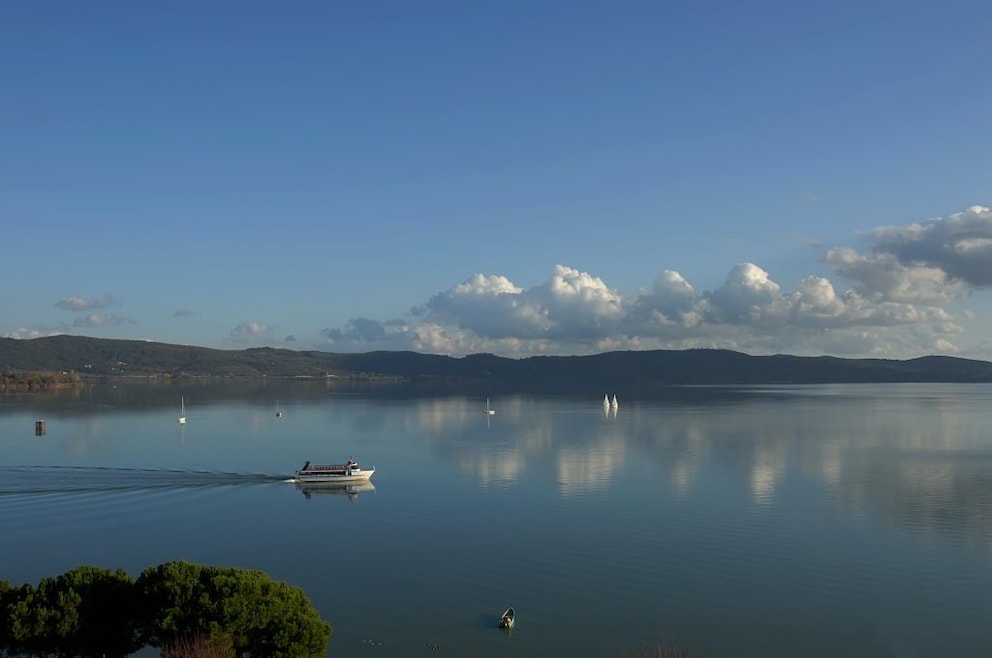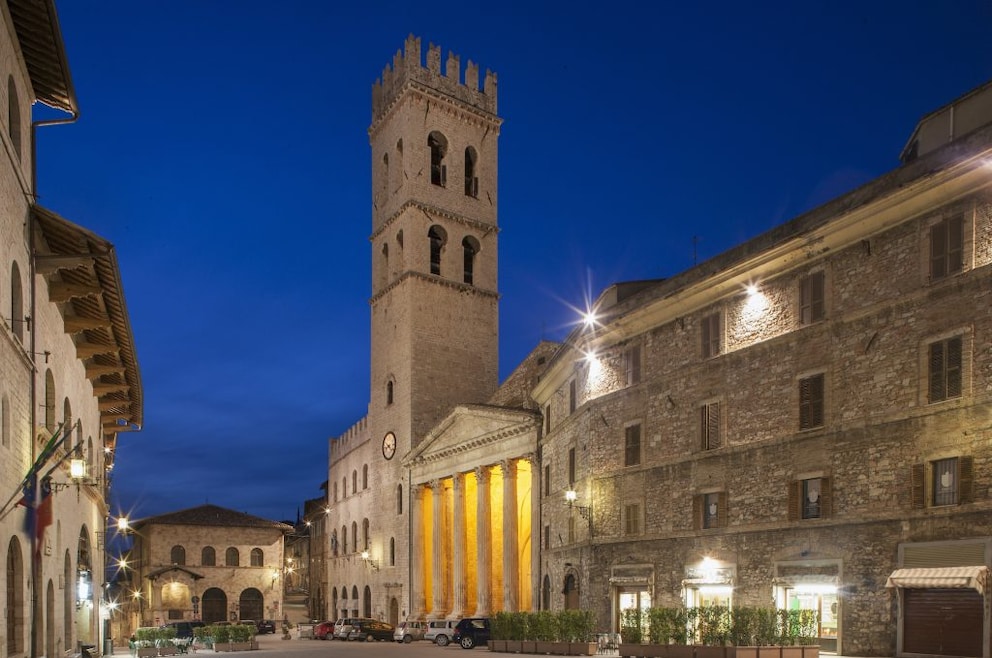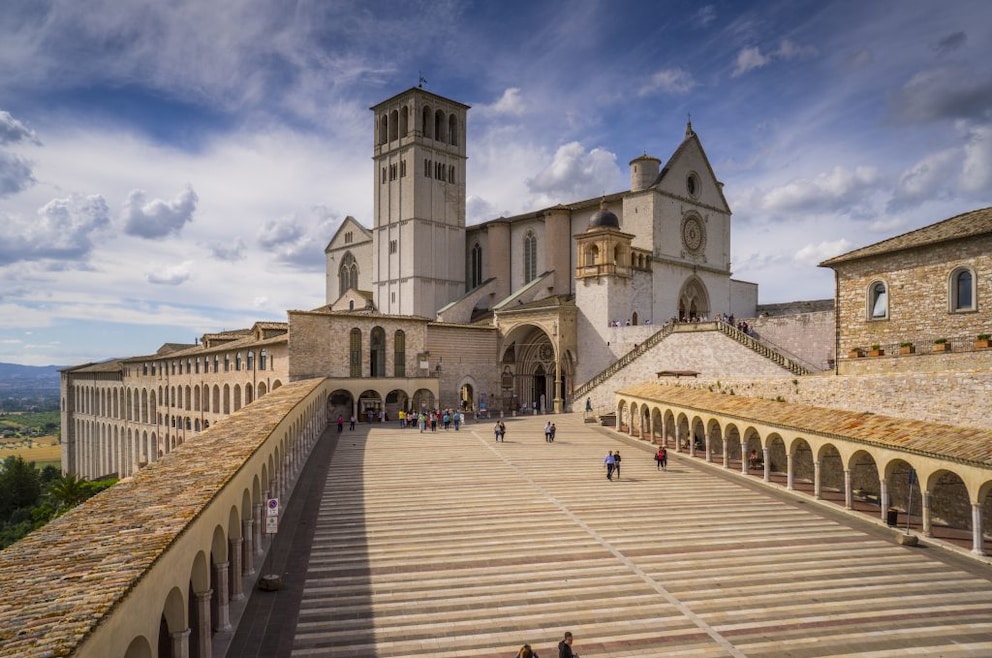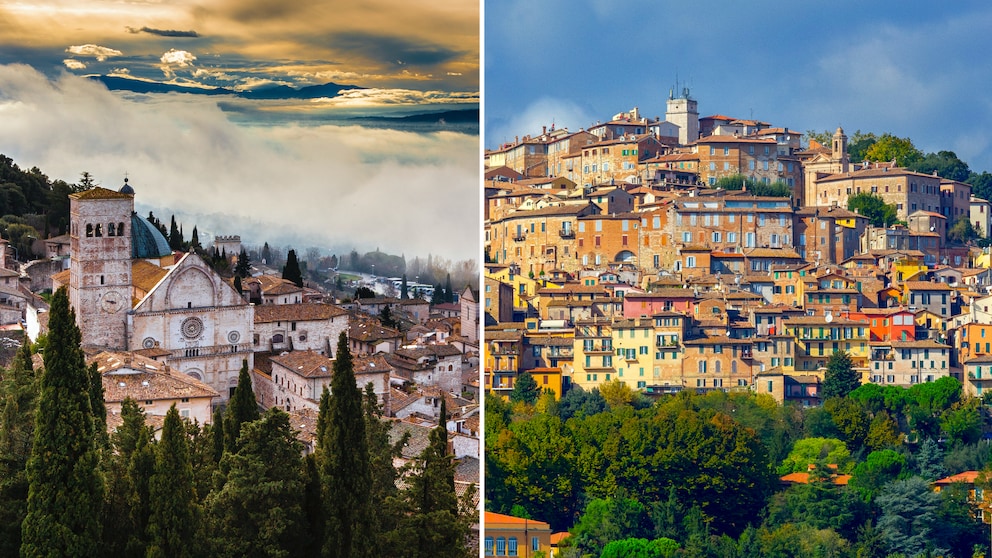April 21, 2025, 12:44 pm | Read time: 4 minutes
A trip to the central Italian region of Umbria is not to be missed. The two historic cities of Perugia and Assisi are particularly worth a visit. TRAVELBOOK has the best tips for both places.
Umbria is the only region in Italy that does not have a coastline. However, if you are not just traveling to Italy for a swim and are interested in art, architecture and history, you cannot miss Perugia and Assisi. Both cities attract visitors with important sights.
Overview
Perugia
Perugia is the capital of the Italian region of Umbria and is also known beyond the country’s borders for its university. The Università degli Studi di Perugia draws a diverse student body from across Europe. This melting pot of cultures creates a unique international vibe, set against a backdrop of quintessentially Italian medieval architecture, with its grand buildings and public squares.
Sights in the Old Town of Perugia
The old town of Perugia is a sight to behold, Especially the Fontana Maggiore and the surrounding Piazza IV Novembre. Right on the city’s most picturesque square, you’ll find the Palazzo dei Piori, housing the National Gallery of Umbria, and the majestic Cathedral of San Lorenzo.

Anyone exploring the many small alleyways of Perugia’s old town will almost inevitably come across the Etruscan Arch (Arco Etrusco) from the 3rd century BC. It is part of the almost completely intact city wall. You can also discover three well-preserved city gates dating back to the Etruscan era. There are also several archways from Roman times.
Chocolate and Jazz: Events in Perugia
Perugia is also the city of Baci Perugina, a special variation of nougat praline. This is of course a popular vacation souvenir. Once a year in October, the Umbrian capital also hosts Eurochocolate, a trade fair with hundreds of events and exhibitions dedicated to chocolate. The cultural highlight of the summer is the ten-day Umbria Jazz music festival at the beginning of July, to which stars from all over the world are invited every year.
Perugia’s Surroundings
Perugia’s surroundings—the Umbria region, including Assisi (see below) and Lake Trasimeno—is a vacation region with numerous agriturismi and vacation resorts that is very popular with Germans. Umbria is one of the few regions in Italy that does not have its own coastline. However, this does not detract from the attractiveness of the hilly landscape, which is often reminiscent of Tuscany. Hikers and nature enthusiasts particularly cherish the Umbrian Apennines for their scenic trails and serene beauty.

Assisi
Assisi is a place with thousands of years of history. As an excursion destination for pilgrims and tourists alike, the town on Monte Subasio, which has been a World Heritage Site since 2000, is one of Italy’s top tourist attractions. Moreover, the enchanting surroundings of this central Italian region offer the perfect setting for a delightful vacation.
The Umbrians and Etruscans lived in Assisi before the Romans. A town was built at the foot of the western side of Monte Subasio as early as the 4th century BC. Parts of the Roman city wall, the amphitheater, the Temple of Minerva and the Roman Forum have been preserved to this day.

There are numerous vacation resorts, agriturismi and vacation homes around Assisi. The medieval town center and the world-famous Basilica of San Francesco on the outskirts are an incomparable backdrop for a stay close to nature.
Sights in Assisi
One of the main attractions in Assisi is the Basilica of San Francesco. Thousands of Christian pilgrims and at least as many onlookers are drawn there year after year. The sarcophagus of Francis of Assisi (1182-1226) can be viewed in the crypt. After a severe earthquake in 1997, the damaged basilica had to be completely renovated. The church, which was built shortly after the death of Francis, houses priceless frescoes and many other relics and art treasures from the Middle Ages.

The entire old town of Assisi is a treasure trove, complete with its ancient city walls, the formidable Rocca Minore fortress, medieval piazzas and palaces, a municipal art gallery spanning various eras, and a multitude of churches. The newer part of Assisi below the old town is also home to spectacular sights such as the bombastic 16th century cathedral of Santa Maria degli Angeli and the small Portiuncula chapel, where St. Francis died and where the Franciscan order was founded.

Why the Maremma in the South of Tuscany is Definitely Worth a Visit

Ostuni — an Insider Tip in the South of Italy

This City Is as Beautiful as Florence — Only Without the Tourist Crowds
Location of Perugia and Assisi on the map
(Text: Jasch Zacharias)


